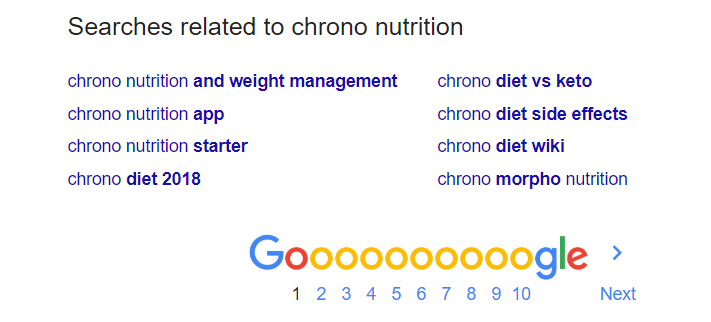


Bloggers invest most of their time and energy into creating interesting content. Wanting to attract and retain people's attention, they work on making their posts unique and their blog design attractive. But what about SEO? During this pursuit of content ideas, SEO tends to fall behind. That is a big mistake. This article tries with 9 Content Optimization Tips to Increase Your Blog Traffic.
Just think about it. What is the point of creating the most amazing posts if the audience can't find it? Search engines such as Google are the first thing we turn to when we want to find an answer to our question. If you optimize your blog in the right way, your posts will come up in the top results and increase your blog traffic.
So, here are some applicable tips that will help you with the optimization process.
Maybe you are already aware of the importance of keywords, but in case you aren’t, this is a part you simply can’t skip.
Keywords signal users what your blog is about. Based on the keywords they will decide whether you can offer them some valuable information or not.
You can use keywords research tools or you can Google your topic and watch out for related searches at the bottom of the page. For example, if you have a lifestyle blog and you want to write about chrono nutrition, this is how you can get some keyword ideas:

Just keep in mind one thing: keywords need to be spread naturally across the post.
Long-tail keywords demand to be mentioned separately. Their effectiveness has been strongly discussed among marketers who swear by this SEO tactic.
Programming algorithms aim to understand the context of the keywords in order to offer the best results for the users. For that reason, long-tail keywords perform best.
Long-tail keywords are phrases with three or four words that narrow down your topic’s subject and help with specific searches.
This type of keywords guide the search engines and prove your blog’s relevance to the readers.
It is best to use long-tail keywords in the title or subtitles to boost your traffic.
Sporadically creating and publishing content on your blog will show a lack of commitment both to search engines and to your readers.
You need to post regularly and consistently if you want to increase traffic.
Tresnic Media wanted to clarify the importance of regular posting so they investigated the following question:
How long does your business need to be blogging before you will start to see an ROI?
The supposed answer was 50 blog posts. They put this to the test and went for a very aggressive approach: they decided to publish 50 blog posts in 25 days.
This frequent publishing during 5 weeks meant that Google was resulting in their posts at a more frequent rate. The most amazing part is that even after this marathon blogging ended, their search engine traffic continued to grow.
As you can tell, investing some more effort into continuity will eventually pay off.
Logically, longer posts are more keyword-rich and therefore, perform better in the search results.
Marketers and SEO specialists are advising writers to compose at least 1,000-word posts.
The thing with blogging is that some bloggers prefer shorter posts. If that is the case with your blog, try to add a longer post from time to time.
Longer posts are more in-depth so they will satisfy the readers’ curiosity. When you add naturally embedded keywords to the mix, you’ll get on the good side of search engines as well.
Reportedly, search engines highly approve of fresh content. This puts the pressure on the bloggers to constantly come up with new and interesting topics.
However, new content doesn’t mean that you have to start from scratch. You can simply use some old ideas and add a new twist to it.
It is better to use an old topic that attracted a lot of attention and add some new info, then to write an irrelevant post just for the sake of posting something fresh. Focus on quality rather than quantity.
Search engines will still notice that you are consistent in posting, which is the key.
Another benefit of recycled content is that it allows you to create longer posts by reviewing the already addressed subject and offering a new point of few. In that way, you’ll incorporate the previously mentioned SEO tip.
Each blogger can sometimes have trouble with coming up with new topics. There is a solution to this problem that also helps with your SEO efforts.
Instead of adding keywords to the topic's headlines, you can search for topics based on keywords.
Use tools such as:
A wide range of tools will help you get more options. Once you see which keywords are popular, create topics based on those findings.

As visual beings, people are automatically more drawn to posts with aesthetically pleasing imagery.
It is enough to say that 69% of marketers claim that visuals are essential to their marketing strategy.
Visual aid in the form of images or videos simplify the content to readers and provides them with a sense of what you are writing about.
But there is more to visuals than creating attractive content for the readers. They can be a great source for optimization.
Add a suitable keyword to image’s ALT text (alternative text) and its caption to signal search engines what your post is about.
Pay attention that you only add high-quality images or videos. Visuals of poor quality can hurt your credibility.

How can you prove to search engines that your post is written based on relevant sources of information? Add links.
Whenever you come across a useful piece of information, use it in your post. It is better to base your writing on credible sources than to make assumptions.
When using information from different sources, make sure that you link back to each source. Even if you refer back to your previous posts, provide a link to it.
Not only will you improve your content’s optimization but you’ll also help your readers to find all the useful information they need.
When you prove yourself as a committed and credible source of information, the readers won't hesitate to come back to your blog or recommend it to someone else.

Your optimization efforts shouldn’t be directed only to your blog. Drive traffic to your blog from other marketing channels.
The way to do that is to cleverly add your blog’s link in your emails, social media or even your website.
For example, if you have an Instagram profile, add a link to your blog in your profile description with some relevant keywords.
Also, when you write a new post, you can share it on your social media channels.
By doing this, you'll be applying an inbound linking tactic that is great for SEO. Inbound linking means that a third-party page leads a user to a page on your blog.
Even your emails can serve as a platform for sharing your blog post links or your blog link. Add your blog link to your email signature or relevantly add a link to one of your posts in the body of the email.
SEO isn’t an overnight success. It takes time and dedication before you see results. Considering that organic traffic is still the best marketing channel, every minute you spend optimizing your blog is worth it. As long as you apply useful techniques and have an SEO strategy, you’ll see how powerful optimization can be.
You will find tons of very useful SEO, Optimization, Speed, Security, Marketing, Web Development, Web Design and various other articles in our Blog Section including Content Optimization Tips. You can find our SEO Optimized Award Winning WordPress Themes for you Sites. Fortunately all those Themes have Free Versions available at WordPress.org.
We believe that this article coves all the aspects of Content Optimization Tips. If you require more information on Content Optimization Tips or any other issues please feel free to Suggest Us,
Comments are Closed